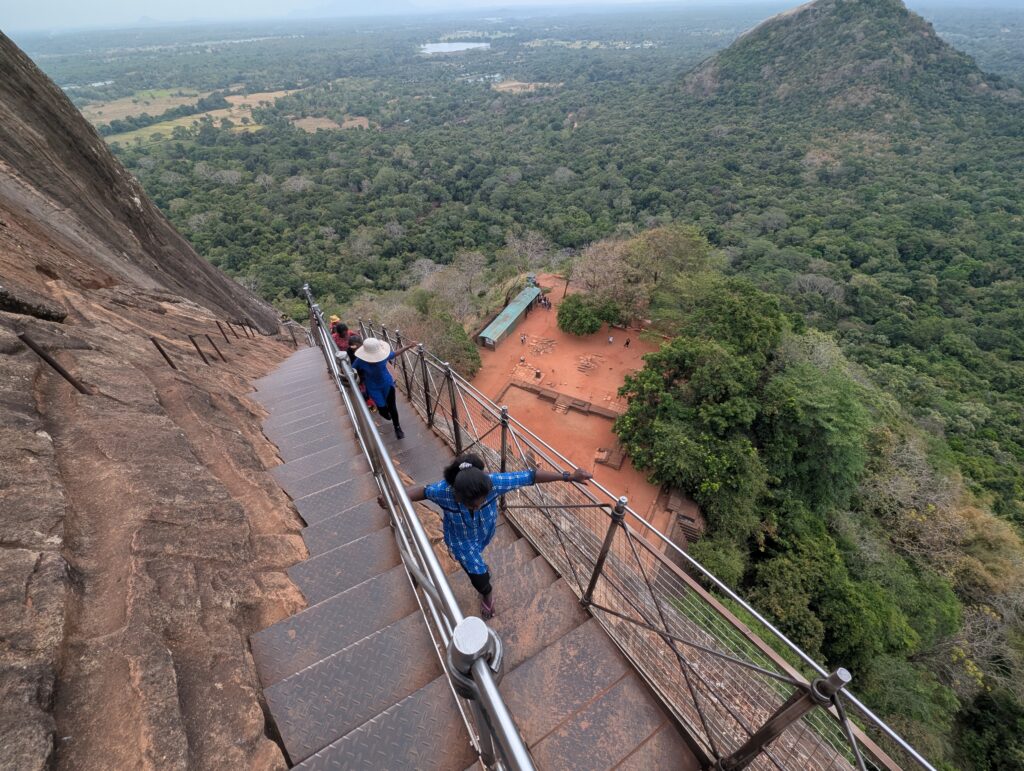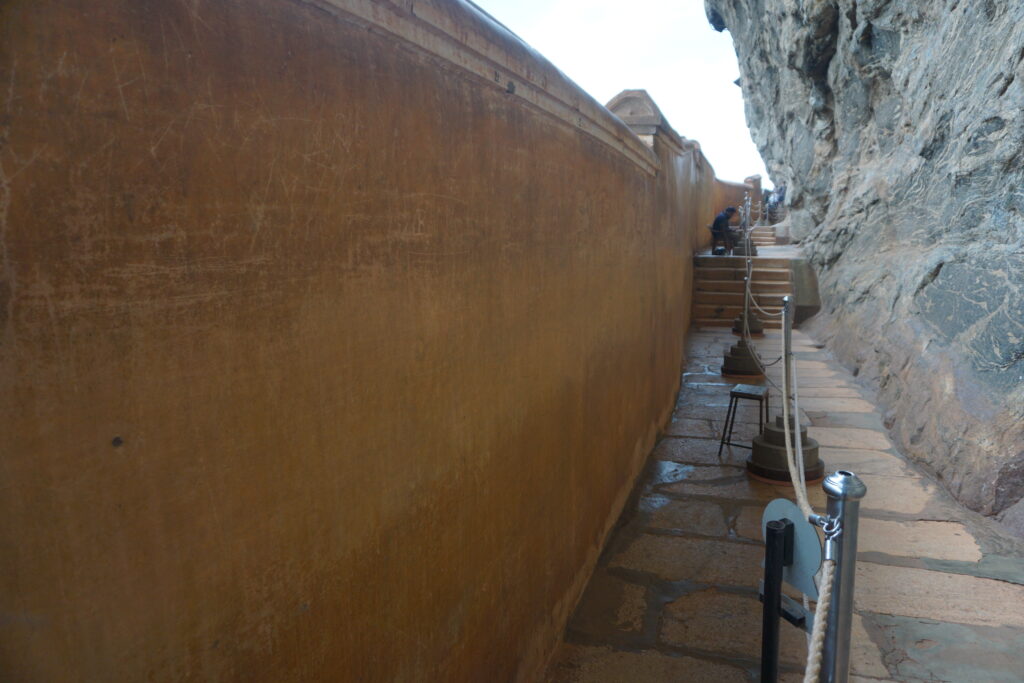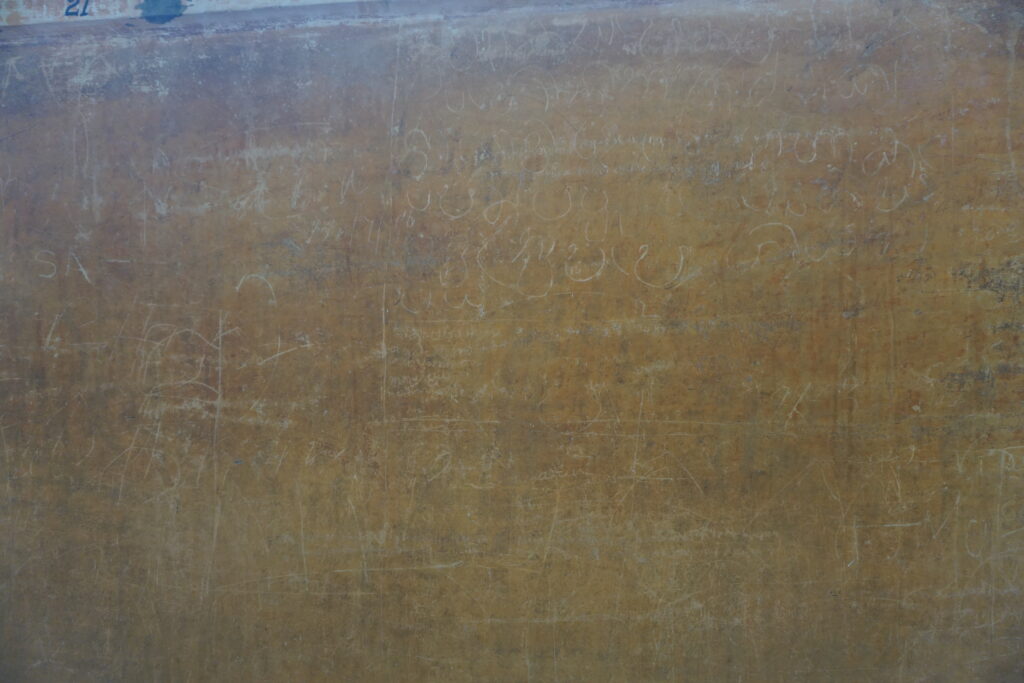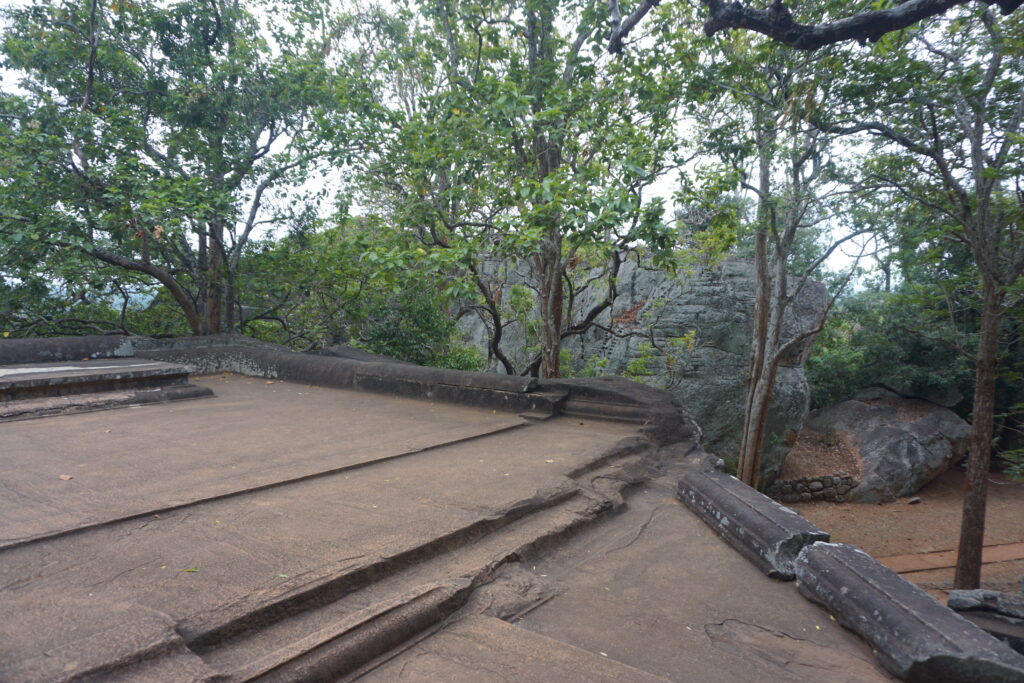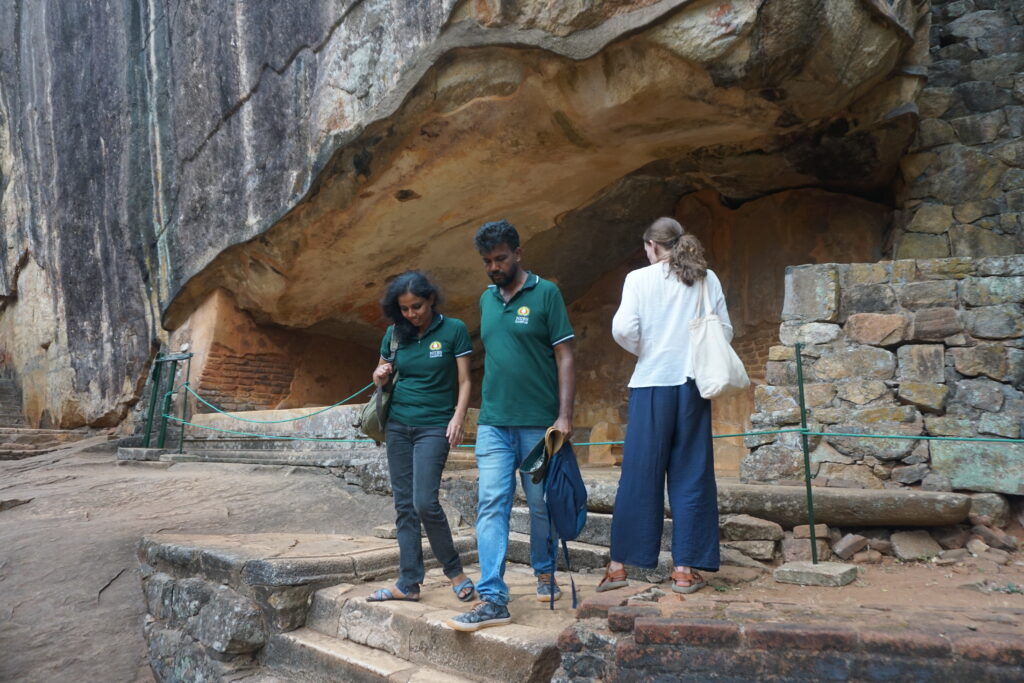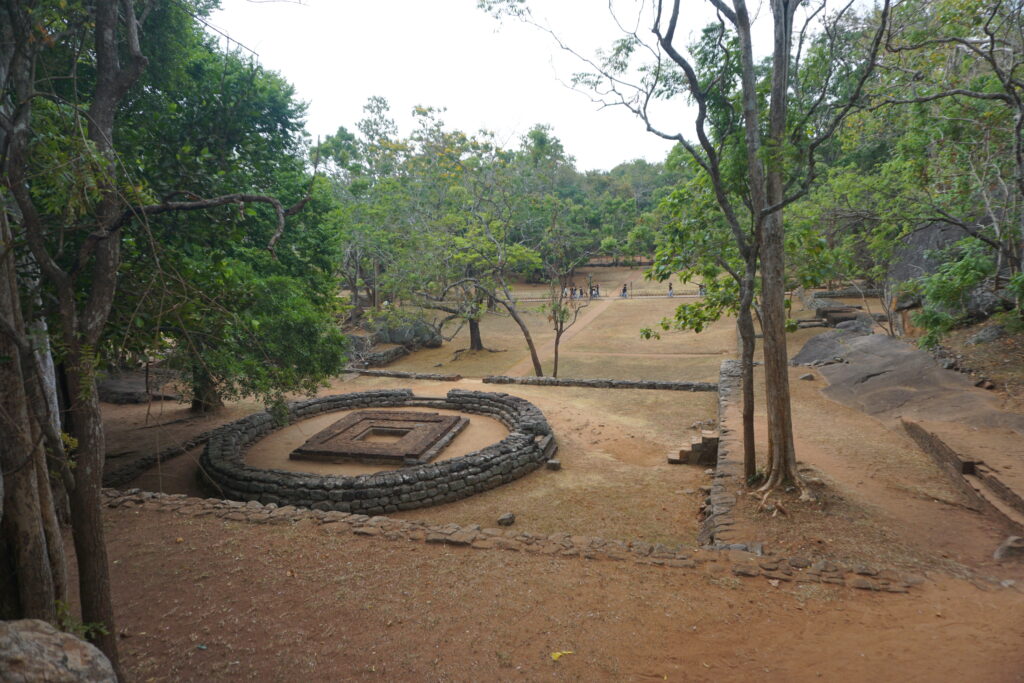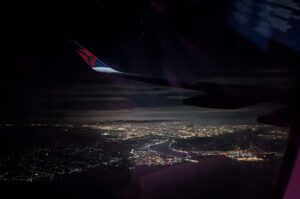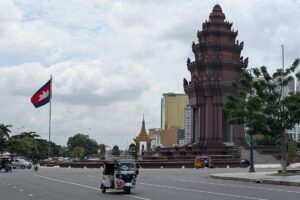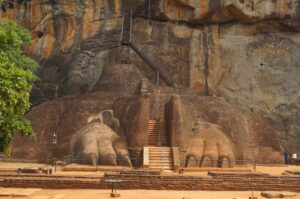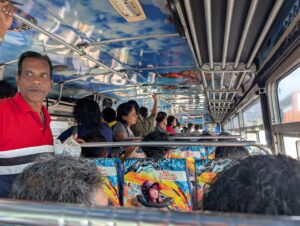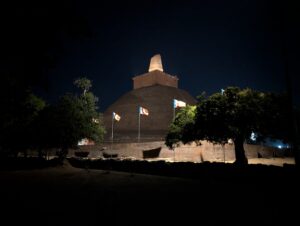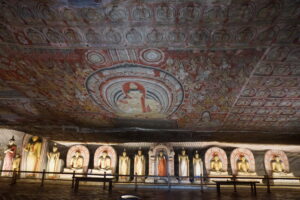Sigiriya
Fortress on a Giant Boulder
Sigiriya is one of those places you can tell will be worth visiting just by searching information about it. How could I not get excited about climbing up to an ancient palace stronghold built atop a giant mountain of rock? Sigiriya is less than two hours by car from Anuradhapura. Even with a late morning start, I had plenty of time to find my way out to the site, walk the museum, and climb the mega-boulder before the day ended.
King Kashyapa I built the palace stronghold in the 5th century. Ancient Sri Lankan chronicles say Kashyapa was the son of the previous king by a concubine or consort, and thus not heir to the throne. He had his father imprisoned and killed, and his legitimate half-brother fled, fearing impending assassination. Expecting his brother to return with an army, Kashyapa had this fortified, difficult to reach residence and capital created. When his brother eventually returned to reclaim the throne, Kashyapa’s army deserted him and he committed suicide. Kashyapa’s successor returned the seat of government to Anuradhapura, relegating Sigiriya to serve as a Buddhist monastery. It continued to serve that purpose into the 14th century.
As with most tourism destinations in Sri Lanka, Sigiriya has a hefty entrance fee for foreigners, but is free for Sri Lankans. As such, there is a separate entrance for foreign tourists. Most foreign tourists arrive by bus with tour groups. I parked in a lot near the museum filled with buses and vehicles of employees and would-be tour guides offering me their services. I figured (correctly) that I could add what I learned from the on-site museum to what I had already learned from internet resources to understand at least as much as most guides would know about Sigiriya. As it turned out, I was joined on and off as I walked through the site by a group of archaeology students from a nearby university, and the graduate assistant chaperoning them. They were more pleasant company, answered any questions I had, and provided interesting and reliable academic insights to the site’s significance.
Walking toward the rock from the museum, I passed a series of gardens. One large garden featured man made pools. These were not moats or any part of a defensive structure, but rather just for aesthetic purposes or enjoyment. The path then leads through tiered gardens, before winding through a boulder garden. Some of these pools and gardens are symmetrical, but not all of them. As I walked through the boulders, I was warned by signs to be silent so as not to disturb the wasps. I certainly did not want to agitate wasps. I never saw any though, despite the moderate traffic along the trails.
(Continued)
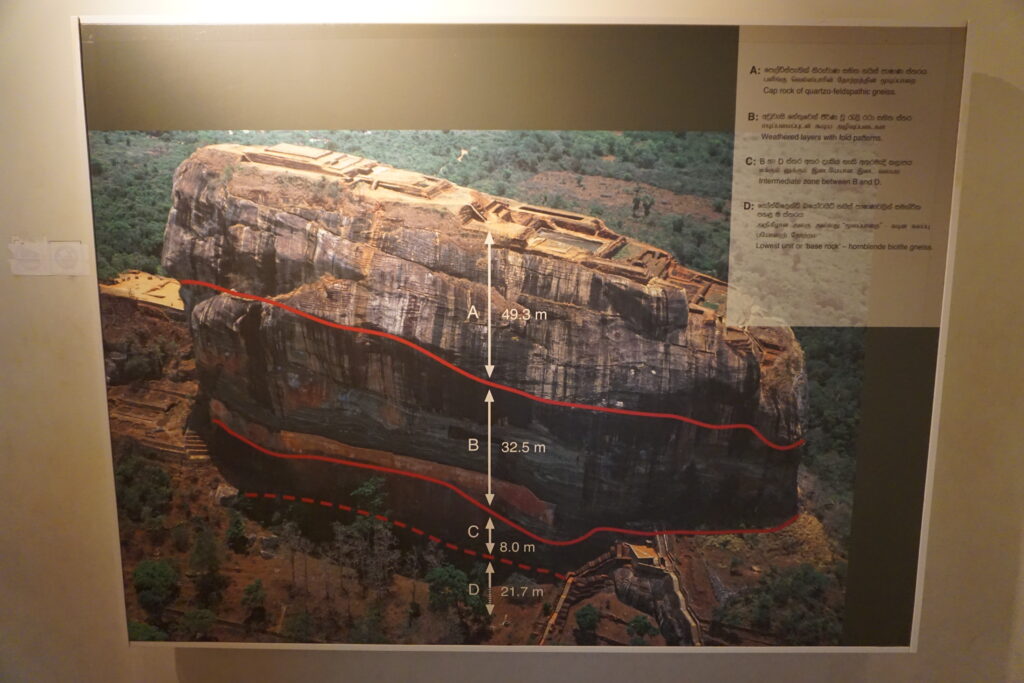
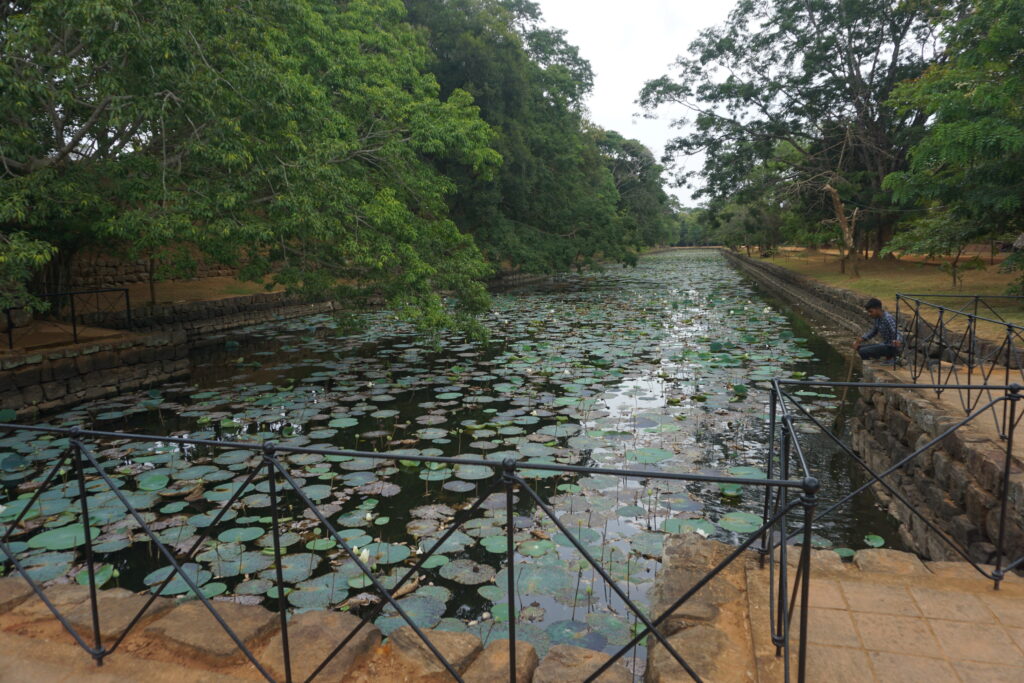
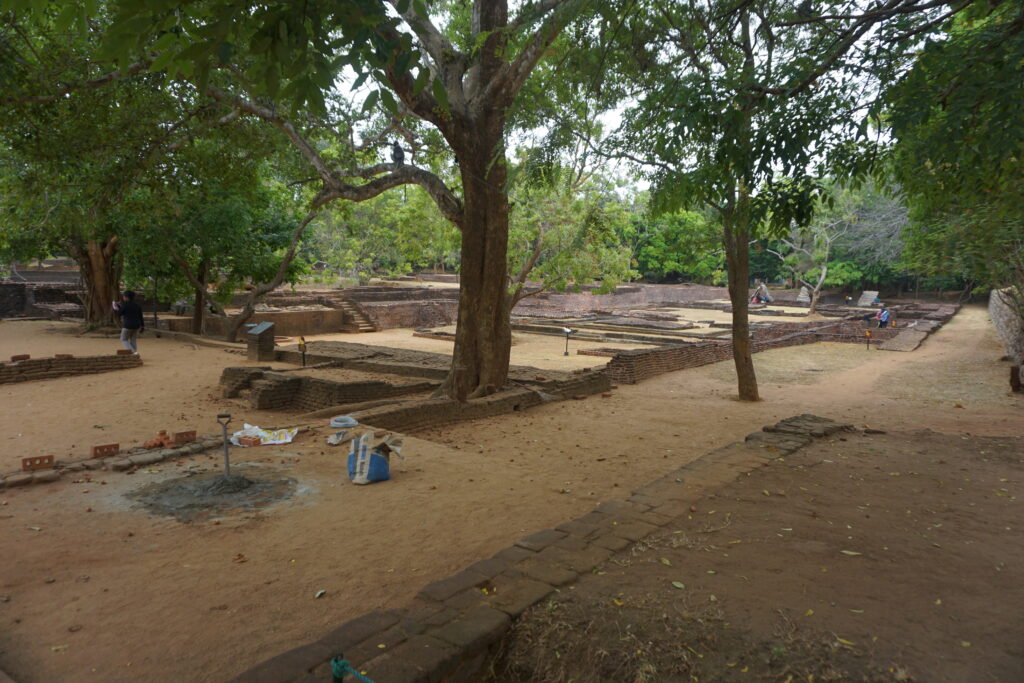
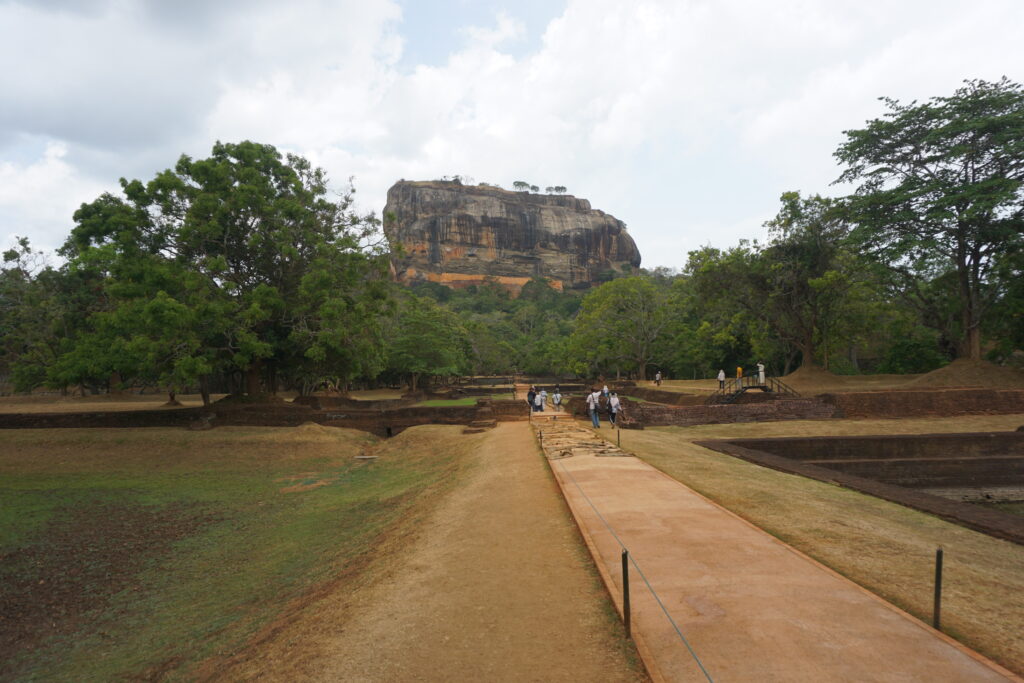
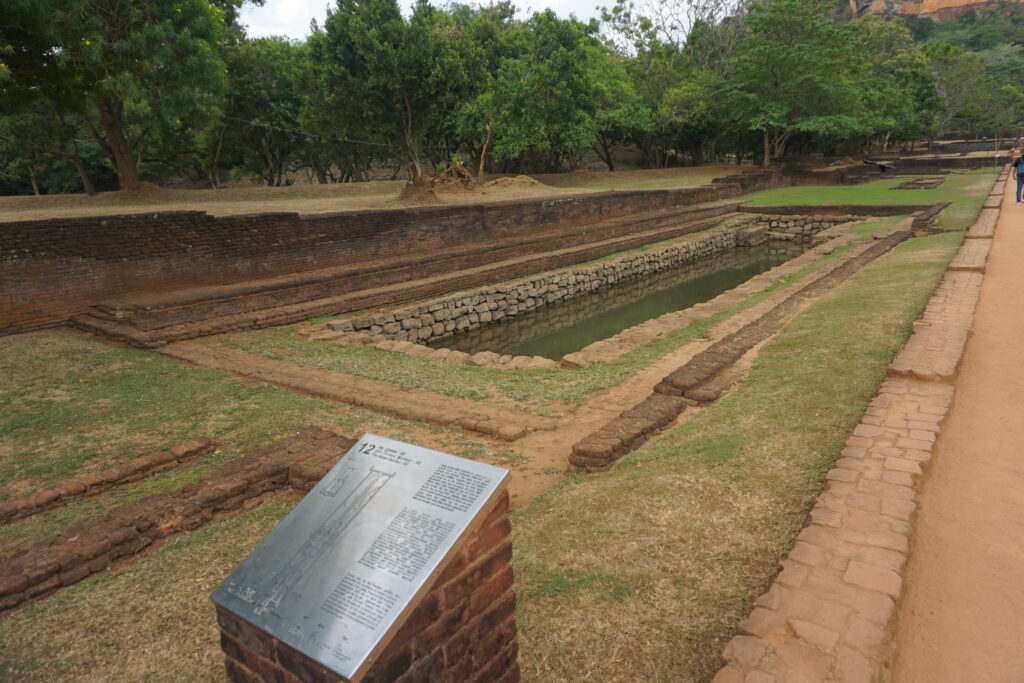
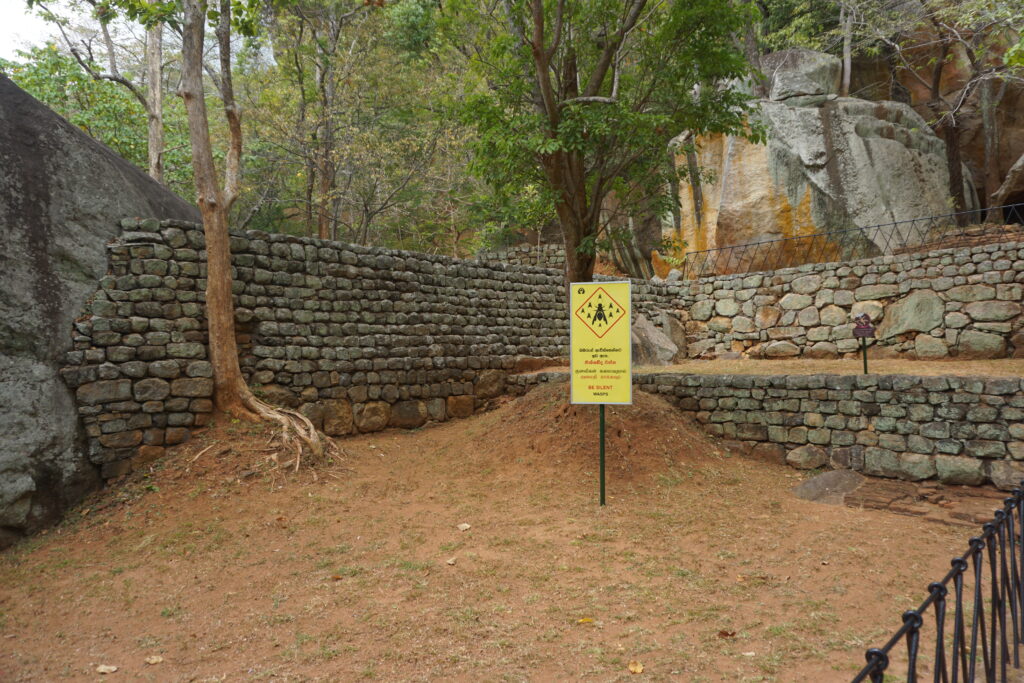
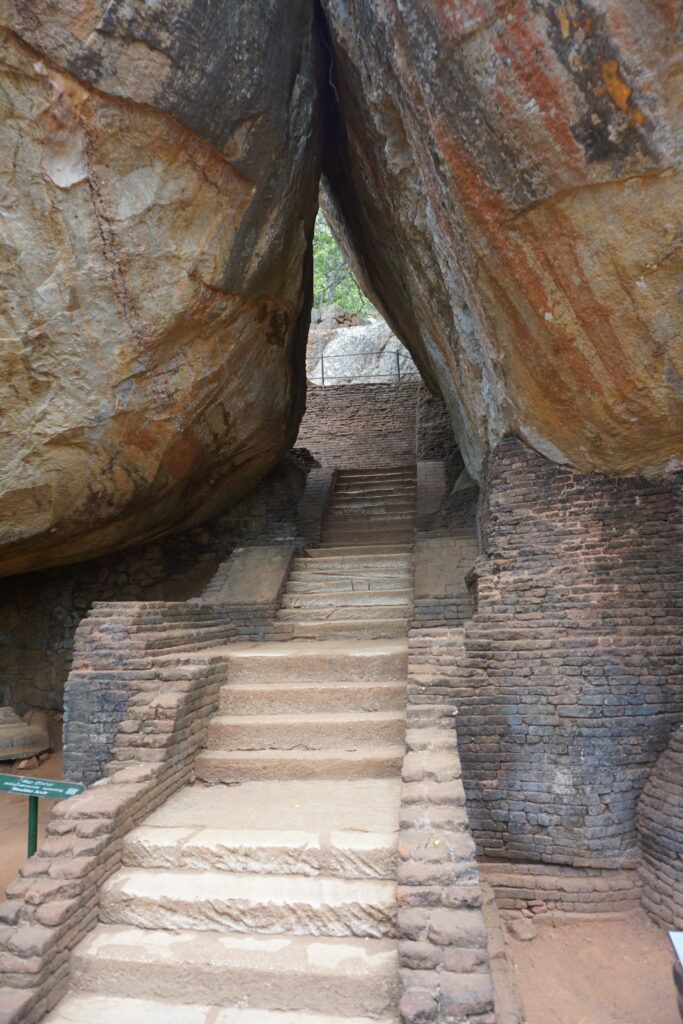
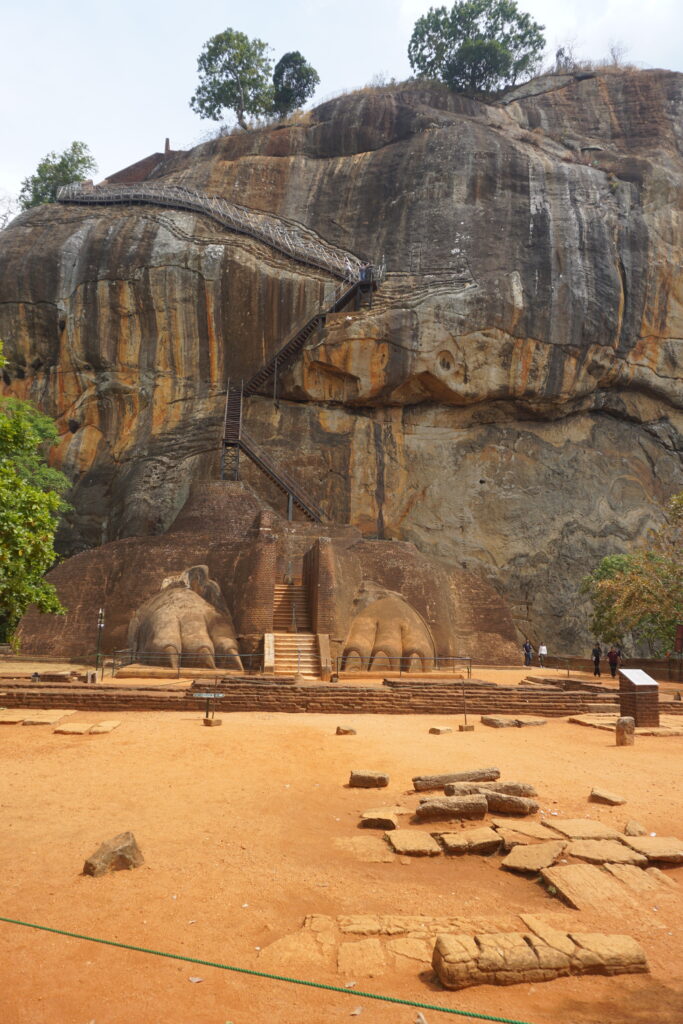
Sigiriya means “Lion Rock.” A series of stairs leads up the steep sides of the massive boulder. About halfway up, I reached a platform or plateau. A pair of huge, carved lion paws guarded the historic gate where the climb would continue. Apparently, there had been a corresponding lion’s head carved into the rocks above that had collapsed sometime in the distant past. I paused to enjoy the ancient sculpture, while the archaeology students sipped water bottles and discussed various school matters and gossip, sometimes in English but more often in Sinhala.
I set out ahead of them to ascend the rest of the steps. It was a warm afternoon, and the climb was steep, though short. Most others seemed to be having a more difficult time of it than I was. I think most of the tour buses had come in the morning to avoid the heat. The giant granite boulder on which the stronghold was built stands nearly 600 feet above the terrain of the gardens. The top offers nice views, impeded only by the haze of a humid summer afternoon. The structural ruins on top of the mountain indicate a very large structure, covering nearly the whole of the rock’s flat upper surface. Otherwise, there are really only the lower sections and bases of walls still standing. There is a large water catchment of some sort high on the hill. The palace seems to have been so large that it extended down to a terraced level just below the summit. I walked all over the top and sides. I visited with the graduate assistant. I took some pictures. I sat and gazed at the gardens and pools below. This place had been an imposing fortress at one point. I can imagine the safe feeling it brought to inhabitants facing an army below. Their ability to hold out against enemies must have been based on the water and food supply.
After spending a couple of hours on and around the top of Sigiriya, I wound my way down the steps opposite the side I ascended. The way down leads past a set of ancient fading paintings. Apparently, the sizable foreign admission fee does not include the ability to photograph these murals. There are several paintings of beautiful women – apsara, as were depicted at Angkor Wat. At some historic time, the entire western side of the rock had been one giant painting, supposed to have been 460 feet wide and 130 feet high making it almost certainly the largest painting in the world at the time. Reference on the mirror wall I will describe next indicate that there were over 500 women or apsara depicted. Most of the artwork has been lost to weather and time. What remains to be seen today is a set of frescoes in a protected, cave-like area about 100 feet above the valley floor accessible to visitors via the stairs. My grad assistant friend assured me it would be acceptable to snap a couple of photos despite the sign forbidding this, but attempting to do so only got me barked at by security. He knew how to shout, “No photo!” in English.
Continuing down the path led me to a fascinating feature called the Mirror Wall. The path is only gently sloping here. It is protected by a 10 foot wall about 460 foot long. The masonry wall is covered with a plaster which is now light orange. At one point, it seems to have been bright white, and polished so smooth, the king could see his reflection in it. Later on, it became a perfect graffiti canvas. Today, the wall contains over 1,500 poems, most from the 8th, 9th, and 10th centuries. Nearly half have been deciphered from ancient Sinhala. Most either describe the women in the paintings, or comment on the travel experience to see Sigiriya. It was interesting to see these ancient curlicue inscriptions, even though I couldn’t have read them even had they been in modern Sinhala. Here again, my grad assistant friend came in handy.
The path led me through more areas of the gardens after I reached the bottom of the rock. A sign then pointed me to the “foreigner exit.” This of course led through the standard long maze of souvenir peddlers. I was frustrated to find that at the end of this maze, I did not find the “cheese.” This exit spat me out over two kilometers from the entry parking lot where I parked my car. There were a couple dozen rickshaw drivers who were more than willing to drive me back to the foreigner entry – for a fee, of course. I decided to walk, on principle.
(Continued)
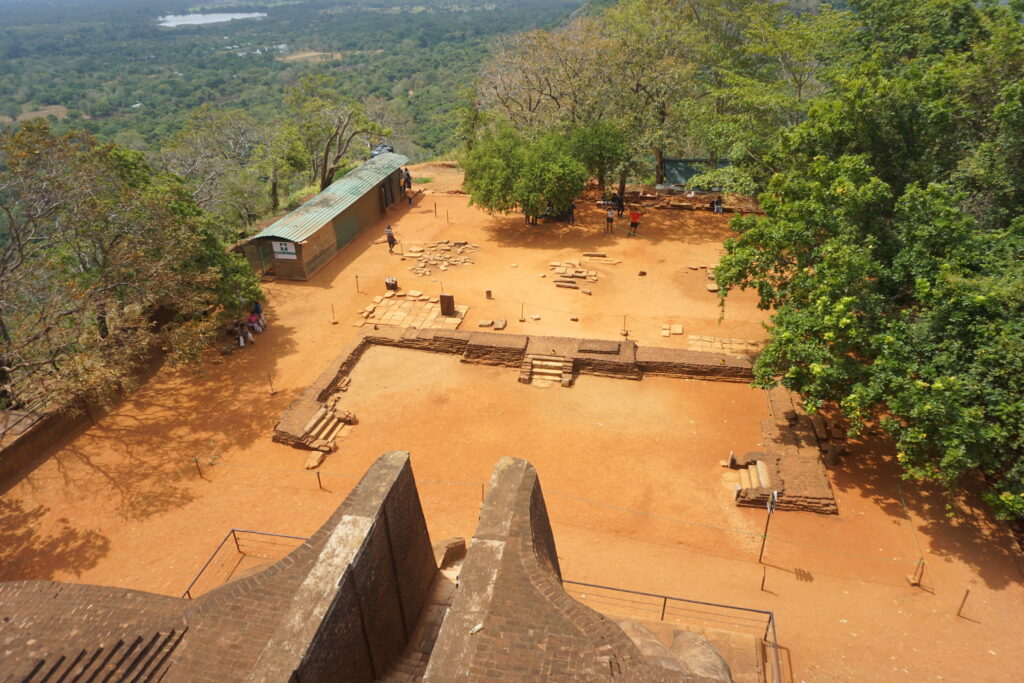
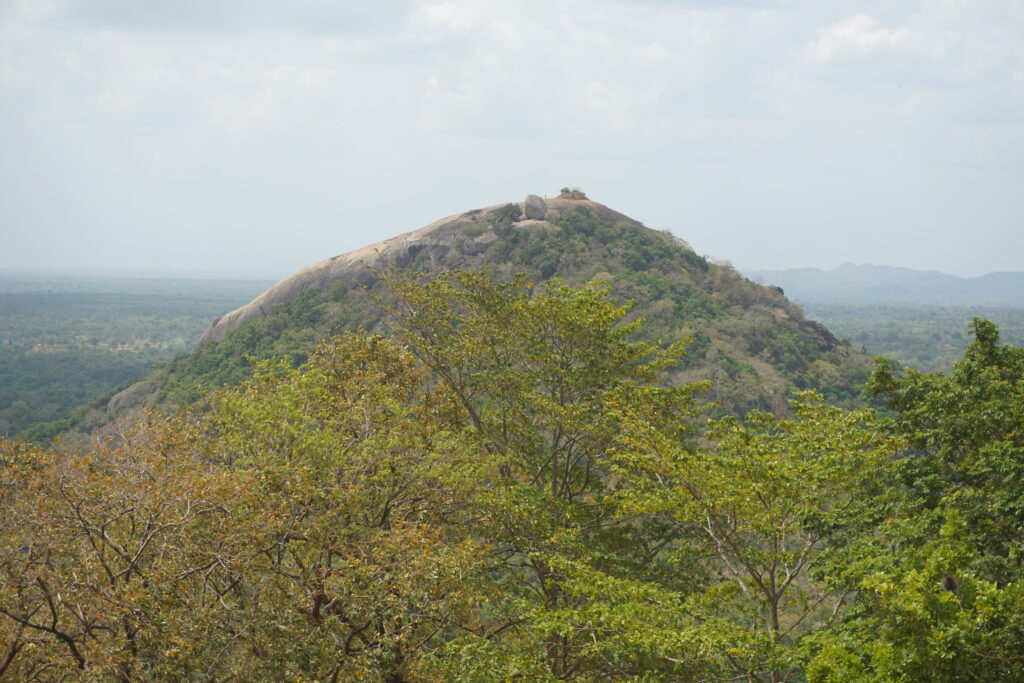
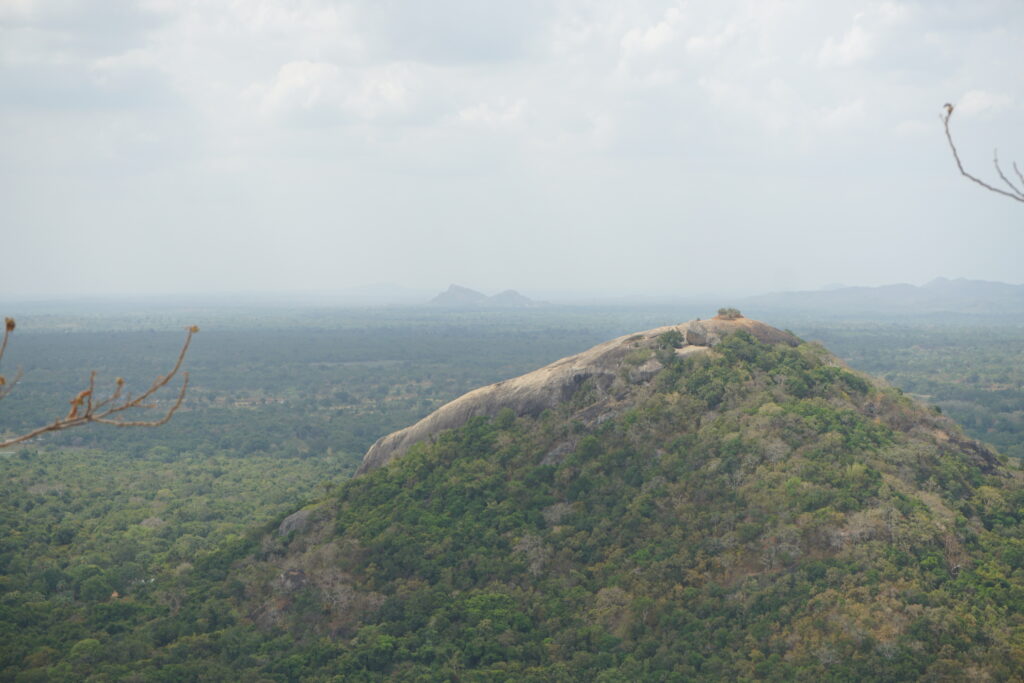
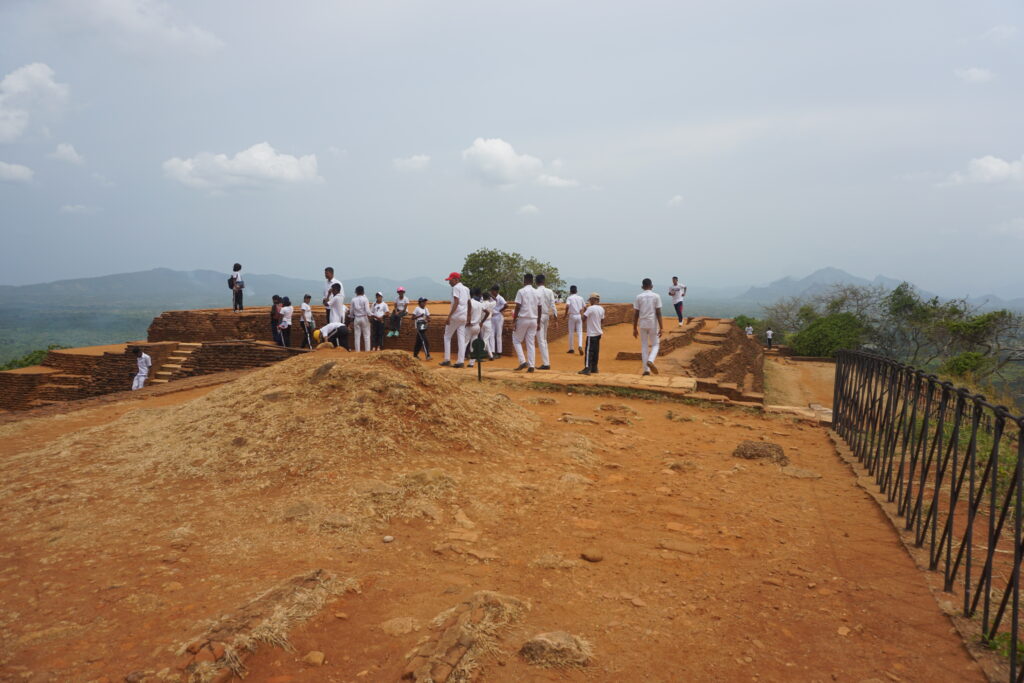
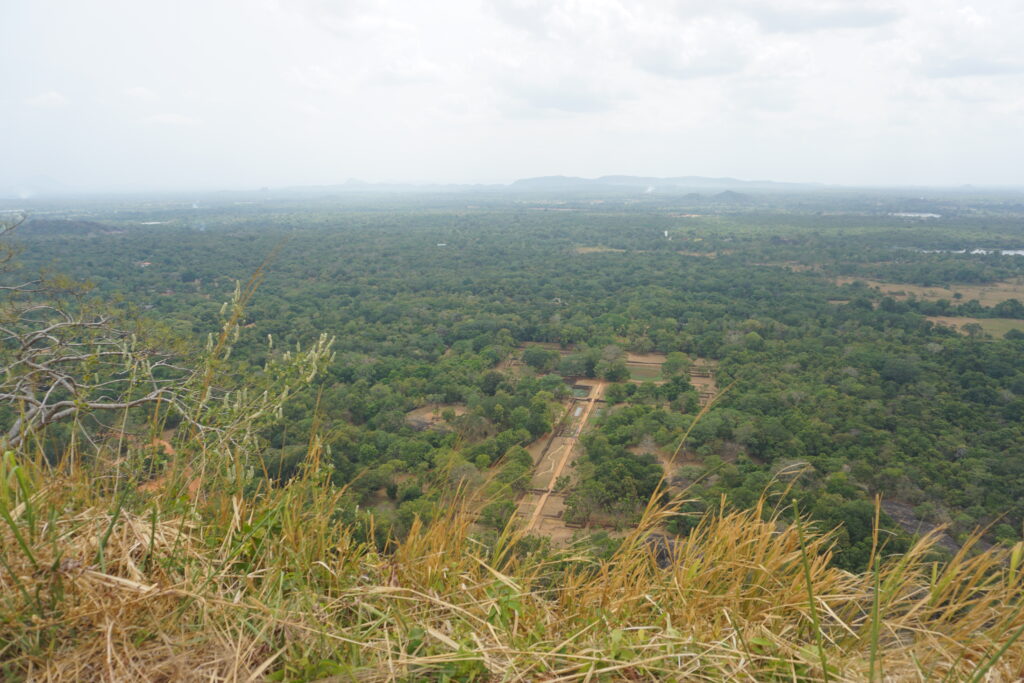
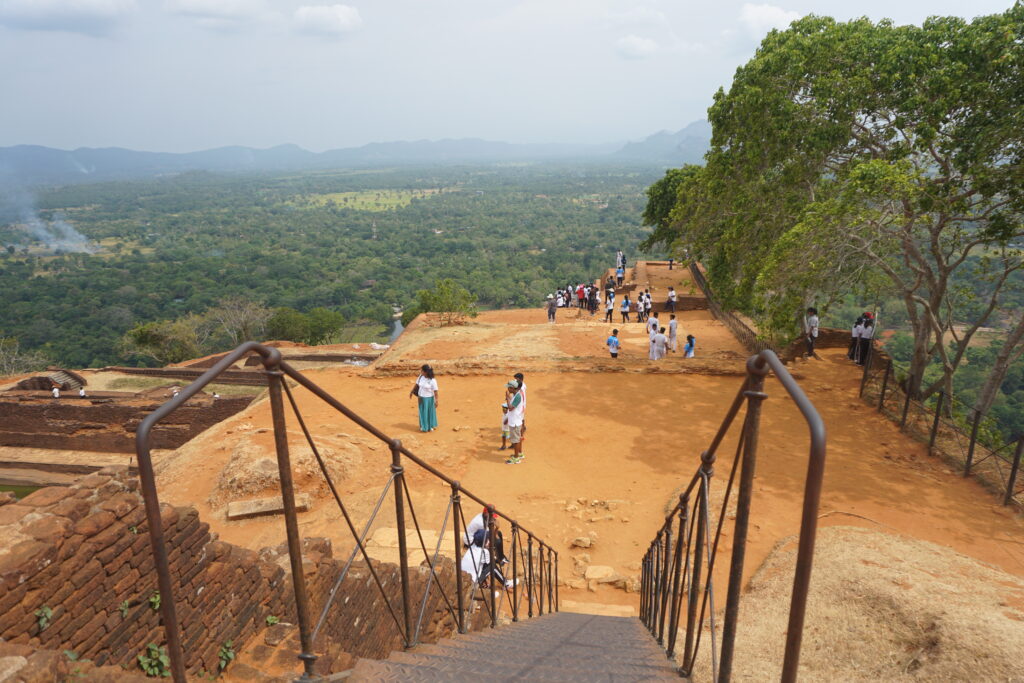
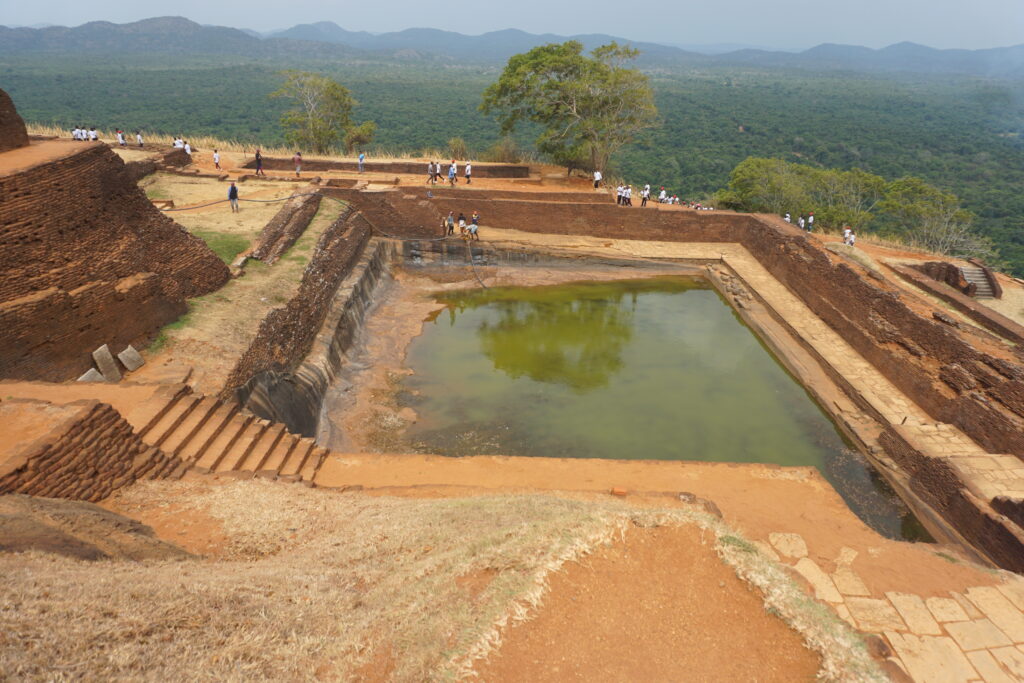
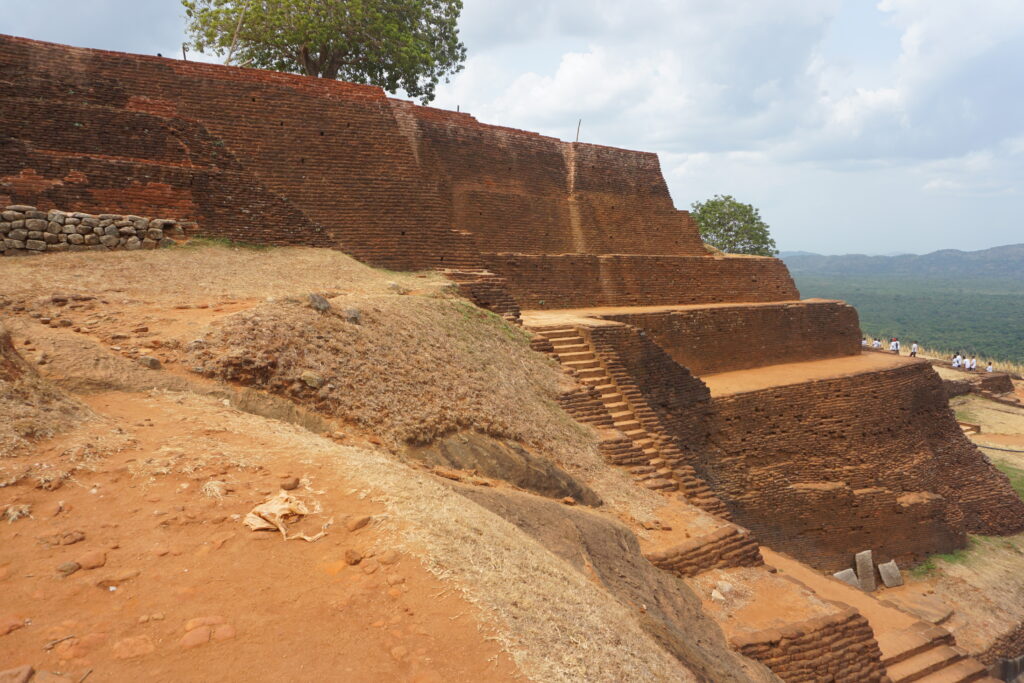
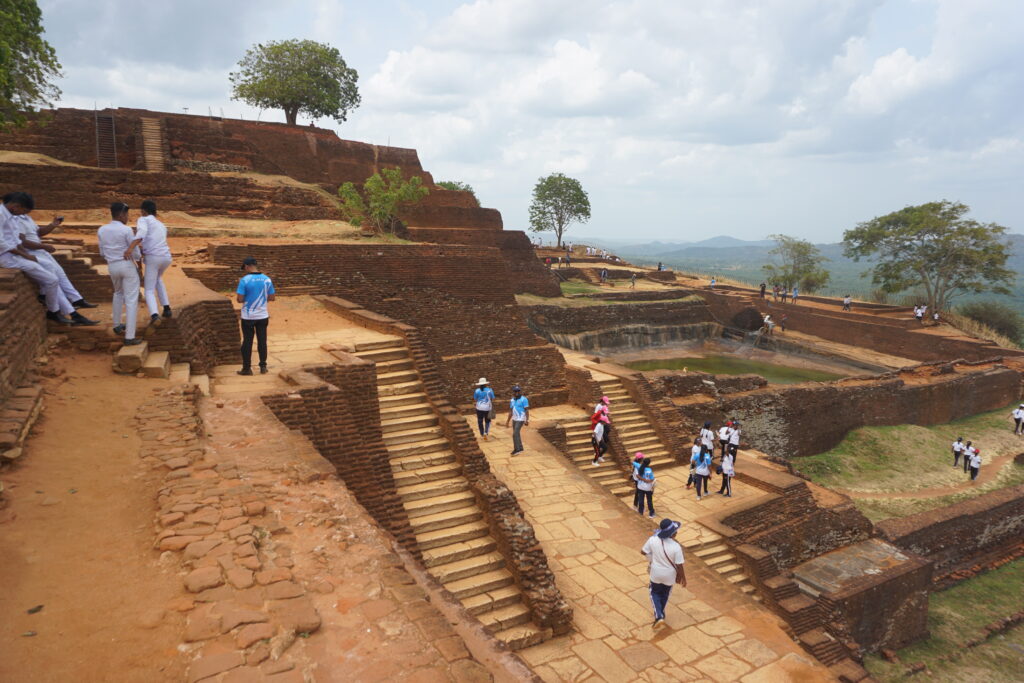
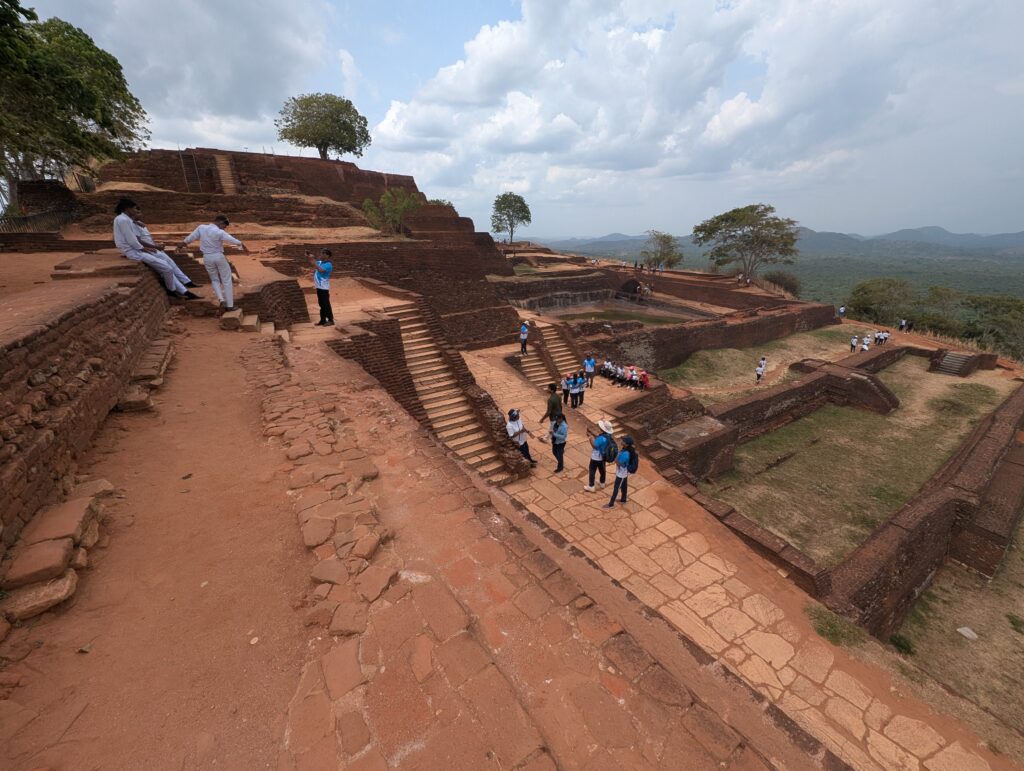
The drive to Dambulla took only about half an hour. I found a highly rated motel that suspiciously cost only four dollars per night. Based on the ratings, I decided to give it a shot. I left the highway on a narrow road, then turned onto a couple of different increasingly rutted and potholed dirt paths. I drove through pastures of goats and other livestock before passing what appeared to be a motorcycle graveyard. I found my motel wedged between a few other buildings, with its own “mirror wall” of graffiti from previous guests extolling the hosts for their wonderful hospitality.
The hosts, however, seemed surprised by my arrival despite the reservation I had made. They told me they needed 15 minutes to get the room ready. I waited patiently, while listening to a group of European young lady tourists chattering with one of the host family about some problem. This seemed a bit ominous. Eventually, one of the employees arrived back with news that my room was ready. We walked between a couple of buildings to an open door. Just above it, water was pouring off the roof and splattering into the door, for no apparent reason. The room was air conditioned, and the wifi worked fine. There was a refrigerator, but it still contained food and liquor from a previous tenant. Strike two. I sat down on the bed and rested my arm on a bedside table – in a pool of goo leftover from the previous guest’s food that had been only partially wiped off in the 15 minute cleanup session. That was it, for me. At that point, they couldn’t have paid me enough to stay at this place. I scurried back to my rental car, explained my decision, and drove back toward the paved roads of Dambulla to find some better accommodation.
Once back in town, I found a nice, clean place to stay. It did not have air conditioning, but there was a good fan and it was already late evening. The hosts offered me some fruit and juice. I met their children. Like many families I had met in Asia, the children spoke better English than their parents, and were thus called on to do some of the translation work. At 3,400 Sri Lankan Rupees, this motel was nearly three times the cost of the one I had abandoned! Fortunately, that’s still just $11.33 US, and it came with good company and a delicious breakfast.
After making my room arrangements, I headed into the main part of town to find some supper, where I encountered yet another example of the “special treatment” afforded to foreign visitors to Sri Lanka. The first restaurant I found had quite a few good local reviews. The reviews indicated that most of the plates cost about 700-800 rupees ($2.30-$2.70). I walked into the restaurant and took a seat. There was menu in Sinhala at my table, which I perused. I had my translate app out and was about to scan it when my server showed up and snatched the Sinhala menu away, kindly offering me an English menu. Strangely, the prices on the English menu were all in the 1400-1500 rupee range. I couldn’t read the Sinhala menu of course, and I had not had a chance to translate it. Before it was snatched away, however, I had noticed that all of the prices on it were three digit numbers. It seems the language was not the only thing different about the “special” menu I was given. Fifteen hundred rupees is only $5, so the meal would not have been expensive. I resented the variable rate pricing enough that I got up and walked out.
I walked to another restaurant inside the local bus station. The owner had just opened the place. He was very proud of his establishment, and enthusiastic about the new business. His food was fresh and tasty. I let him up sell me on some delicious fruit juices. I ended up paying a bit more than I had intended, but at least I was treated with hospitality and I got to enjoy some good fruit juice. I returned home to yet another shower, and sat damp underneath the fan. I never could figure out how to use the mosquito net, so I just relied on the air movement of the fan to keep the mosquitos away. It seemed to work fine. I was refreshed and ready to visit the Dambulla Caves in the morning.
